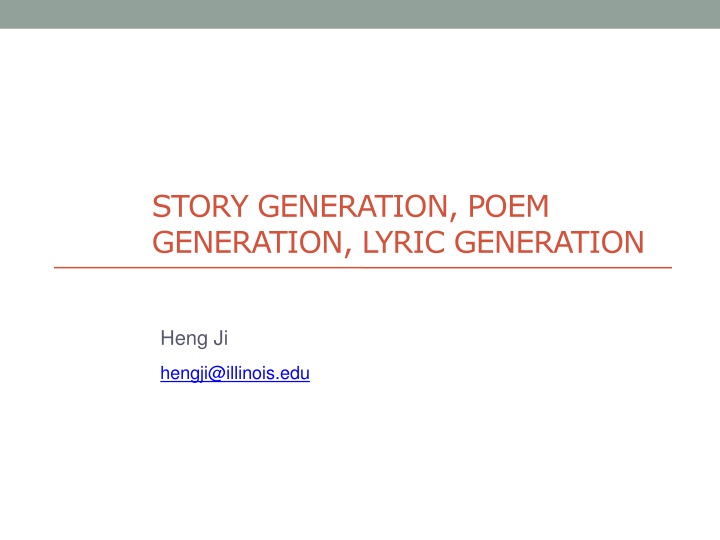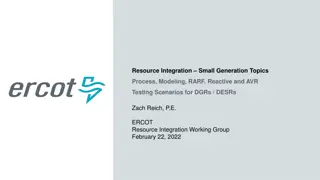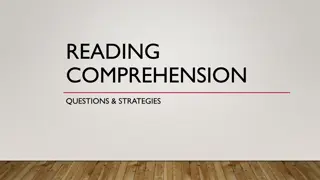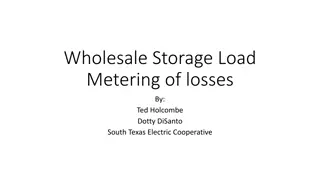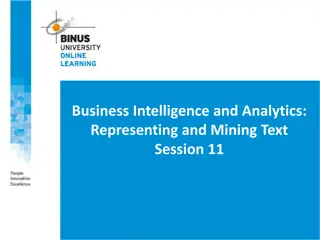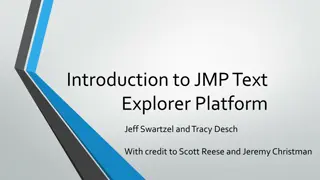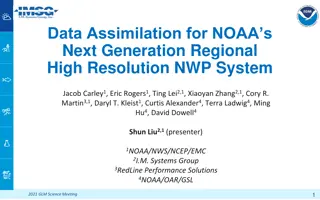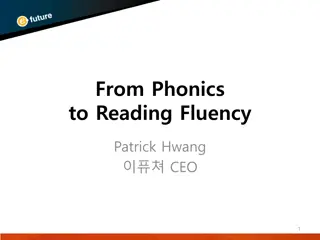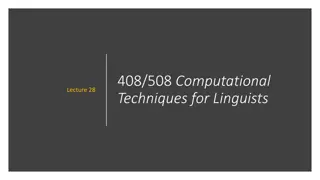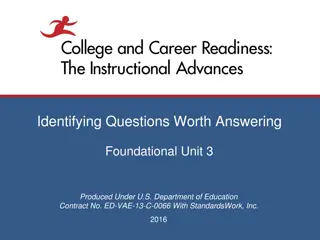Advancements in Text Generation and Comprehension Modeling
Cutting-edge research in coherent story generation, surface realization models, story ending generation, and animation generation is showcased. The models produce distribution over vocabulary and next token prediction for generating text and handling complex sentences seamlessly.
Download Presentation

Please find below an Image/Link to download the presentation.
The content on the website is provided AS IS for your information and personal use only. It may not be sold, licensed, or shared on other websites without obtaining consent from the author.If you encounter any issues during the download, it is possible that the publisher has removed the file from their server.
You are allowed to download the files provided on this website for personal or commercial use, subject to the condition that they are used lawfully. All files are the property of their respective owners.
The content on the website is provided AS IS for your information and personal use only. It may not be sold, licensed, or shared on other websites without obtaining consent from the author.
E N D
Presentation Transcript
STORY GENERATION, POEM GENERATION, LYRIC GENERATION Heng Ji hengji@illinois.edu
Coherent Story Generation (Zhai et al., ACL2019)
Surface Realization Model Produces two outputs: a distribution over the vocabulary that predicts the successive word, and a boolean-valued variable that indicates whether the generation should move to the next event
Surface Realization Model Exploits a multi-task learning framework: it outputs the distribution over the next token dt, as well as at, which determines whether to shift to the next event
Story Ending Generation (Li et al., COLING2018)
Results (Li et al., COLING2018)
Results Story Cloze Prediction
Animation Generation (Zhang et al., SEM2019) Text-to-animation to handle complex sentences
Text Simplification Firstly the dependency links of cc and conj are cut Then we look for a noun in the left direct children of the original root LAUGHS and link the new root gives with it In-order traverse from the original root and the new root will result in simplified sentences
18 Interactive Creative Story Generation Nice story! But can you make the ending sad? Can you tell a story about an athlete ran a race? Sam was a star athlete. He ran track at college. There was a big race coming up. Everyone was sure he would win. Sam got very nervous and lost the game. Sam was a star athlete. He ran track at college. There was a big race coming up. Everyone was sure he would win. Sam got first place.
Poem Generation https://www.poem-generator.org.uk
Poem Generation
Poem Generation (Astigarraga et al., ACL2017) Input a set of sentences, a rhyme checker and a syllable-counter. Procedure lexical exploratory analysis semantic exploratory analysis poem generation
Lexical Exploratory Analysis Count the number of potential verses. Find the number of verses which do not adjust to the rhyming convention, and show their endings. Find the number of verses which rhyme with a given word, and list them. Compute the number of rhyming equivalence classes of the set of verses. A rhyming equivalence class is a set of verses which share the same rhyming pattern. Compute the number of rhyming equivalence classes of the set of verses that have more elements than the minimum number of rhyming verses in a poem. This is the number of valid equivalence classes, in the sense that elements from the other equivalence classes cannot form part of a poem. Create a list with a verse from every equivalence class along with the number of elements in such equivalence class. Plot the number of verses in each equivalence class. Plot the logarithm of the number of verses in each equivalence class Plot the histogram of the number of equivalence classes according to the equivalence class size Plot the histogram of the number of equivalence classes according to the logarithm of the equivalence class size.
Semantic Analysis Build a semantic model from the set of documents Ds provided by the user Find the verses more similar to a given theme according to the semantic models. Find the verses more similar to a given theme according to the semantic models and that also rhyme with a sentence.
Poetry Generation Ignore equivalence classes with fewer elements that the minimum needed In this step the equivalence classes from which a poem cannot be created are ignored Compute the best poems given a theme according to a goodness function Goodness functions are available to create poems
Poem Generation Demo (Ghazvininejad et al., ACL2017)
Style Control Features Encourage/discourage words. User can input words that they would like in the poem, or words to be banned. Curse words. We pre-build a curse-word list Vcurse, and f(w) = I(w, Vcurse). Repetition. To control the extent of repeated words in the poem. For each beam, we record the current generated words Vhistory, and f(w) = I(w, Vhistory). Alliteration. To control how often adjacent non-function words start with the same consonant sound. Word length. To control a preference for longer words in the generated poem. Topical words. For each user-supplied topic words, we generate a list of related words Vtopical. Sentiment. We pre-build a word list together with its sentiment scores based on Senti-WordNet (Baccianella et al., 2010). Concrete words. We pre-build a word list together with a score to reflect its concreteness based on Brysbaert et al. (2014)
Rap Lyric Generation (Manjavacas et al., ACL2019 workshop) Character-level, syllable-level and a hierarchical LM (HLM) that integrates both levels Consider syllable-level instead of word-level based on two-fold reasoning: (i) similar to sub-word models such as those induced through Byte-Pair-Encoding (Sennrich et al., 2016) or SentencePiece (Kudo and Richardson, 2018) , syllable-level segmented input helps limiting the exploding vocabulary size of noisy corpora. (ii) Syllables play a more central role than words in a particularly rhythmic genre like Hip-Hop in which, moreover, a tendency towards monosyllabic words reduces the vocabulary differences for word-level modeling.
Conditional Templates Rhythm Condition LMs on a a measure of verse length count the number of syllables of each line in the erse and bucket them according to the following ranges: < 10, (10 -15), (15 - 20) and > 20 Rhyme the rhyme-based condition corresponding to the line unite around the corner is AO1-ERO i.e. the ARPABET representations corresponding to the stressed syllabic nuclei of cor- and -ner
Results Participants were shown Hip-Hop samples of lengths of 3 to 4 lines and were tasked to guess whether the dis306 played text was generated or real in 15 seconds.
How to evaluate creative generation? (Potash et al., ACL2018 workshop) Fluency/Coherence Evaluation: Given a generated verse, we ask annotators to determine the fluency and coherence of the lyrics. The goal of the style matching annotation is to determine how well a given verse captures the style of the target artist.
